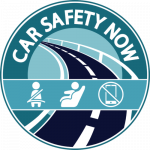Seat Belts
Stage 4: Transitioning older children to seat belts
Older children should use a lap-shoulder seat belt in the back seat once they outgrow a booster seat, at least to age 8 and 4’9″ tall. They have not outgrown a booster seat until the seat belt fits correctly:
1

The shoulder strap should cross the center of the chest and rest on the shoulder (not the neck).
2

The lap belt should fit low and snug on the upper thighs (not the stomach).
3

The knees should bend at the edge of the vehicle seat when sitting all the way back.
4

Feet should rest flat on the floor.
0%
Seat Belt Safety Tips

- Use booster seats until the safety belt fits properly, but at least to age 8 and 4’9″ tall; use lap/shoulder safety belts once children outgrow booster seats.
- When is a child ready for a safety belt?
- The child can sit all the way back in the vehicle seat.
- The child can sit all the way back in the vehicle seat, with feet touching the floor.
- The shoulder belt is crossing the center of the chest and resting at the shoulder (not the neck).
- The lap belt fits low and snug on the upper thighs (not the stomach).
- The child is able to stay seated like this for the whole trip.
- Make sure your child does not tuck the shoulder belt under her arm or behind her back. This leaves the upper body unprotected, putting your child at risk of severe injury in a crash.
- Lap and shoulder belts are necessary for optimal protection. If you have only lap belts in your car, there are some alternatives, including having shoulder belts installed in your vehicle or using a travel vest (see a list of some available vests at www.healthychildren.org/English/safety-prevention/on-the-go/pages/Car-Safety-Seats-Product-Listing.aspx).
- Always use the back seat for children under age 13.
For installation help and more information, consider these helpful sites:
- http://www.healthychildren.org
/English/safety-prevention/on-the-go/pages/default.aspx - https://www.chkd.org/Patients-and-Families/Health-Library/Way-to-Grow/Car-Seat-Safety/
- chop.edu/service/car-seat-safety-for-kids
- https://www.safekids.org/ultimate-car-seat-guide/
- https://www.nhtsa.gov/parents-and-caregivers



